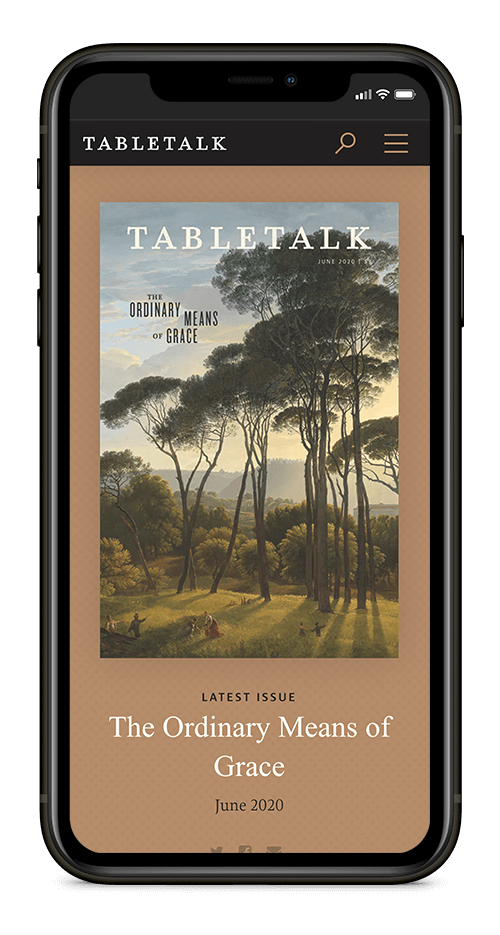
Request your free, three-month trial to Tabletalk magazine. You’ll receive the print issue monthly and gain immediate digital access to decades of archives. This trial is risk-free. No credit card required.
Try Tabletalk NowAlready receive Tabletalk magazine every month?
Verify your email address to gain unlimited access.
Exodus 28:6–14
“They shall make the ephod of gold, of blue and purple and scarlet yarns, and of fine twined linen, skillfully worked” (Ex. 28:6).
Special garments had to be made for the high priest of Israel, and Exodus 28 contains the directions for this clothing that would set the high priest apart from the people. As we begin our study today, continuing our look at this important chapter, we should first note that the priestly garments were to be made of “gold, blue and purple and scarlet yarns, and fine twined linen” (Ex. 28:5). This should sound familiar because these were the same materials used to create the curtains for the walls of the tabernacle itself. The fully clothed high priest would in a sense resemble the tabernacle, indicating a special association with God Himself. God would dwell among the people of Israel in the tabernacle, and the high priest was like a mini-tabernacle, a place where the Lord would dwell among them and walk among them in the courtyard of the tabernacle. In light of the fact that God became incarnate as the Lord Jesus Christ to be our Great High Priest, it is easy to see how the priest’s resemblance to the old covenant tabernacle, God’s dwelling place, anticipated the incarnation, for in Jesus God dwells most fully and perfectly (see John 1:14; Heb. 6:20).
Today’s passage tells us that the colored yarns were used to make an ephod for the high priest (Ex. 28:6–14). The ephod was something like an apron; it was a square or rectangular garment that the high priest wore over his robe. It did not have sleeves and covered his body from his shoulder to his thigh. A woven band or tie secured the ephod around the priest’s waist (Ex. 28:6–8).
On the shoulder pieces of the ephod were two onyx stones set in “gold filigree,” one for each shoulder. The names of the twelve sons of Israel (Jacob) were engraved on the stones, six of the sons on one, and the other six on the other (Ex. 28:9–14; see Gen. 46:8–27). The significance of the high priest’s carrying the names of the sons of Jacob, the fathers of the nation of Israel, lies in demonstrating that the high priest represented the entire covenant community before the Lord. When the high priest carried the blood into the Most Holy Place on the Day of Atonement (see Lev. 16) and when he carried out his other priestly duties, he was standing in for the entire nation, interceding on behalf of the people. In God’s covenants, one person can represent others.
Coram Deo Living before the face of God
The principle of representation is vital for understanding the doctrines of Scripture. Israel’s high priests represented the nation before God, pointing to the Great High Priest, Jesus Christ our Lord, as the consummate representative of sinners before our holy Creator. If we do not trust in Jesus to represent us before the Father, we will represent ourselves and will not inherit eternal life because of our sin.
For further study
- Numbers 1:44
- Isaiah 43:27
- Romans 5:12–21
- Hebrews 9:15